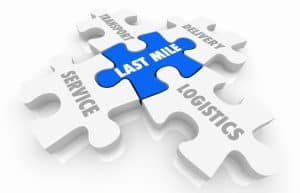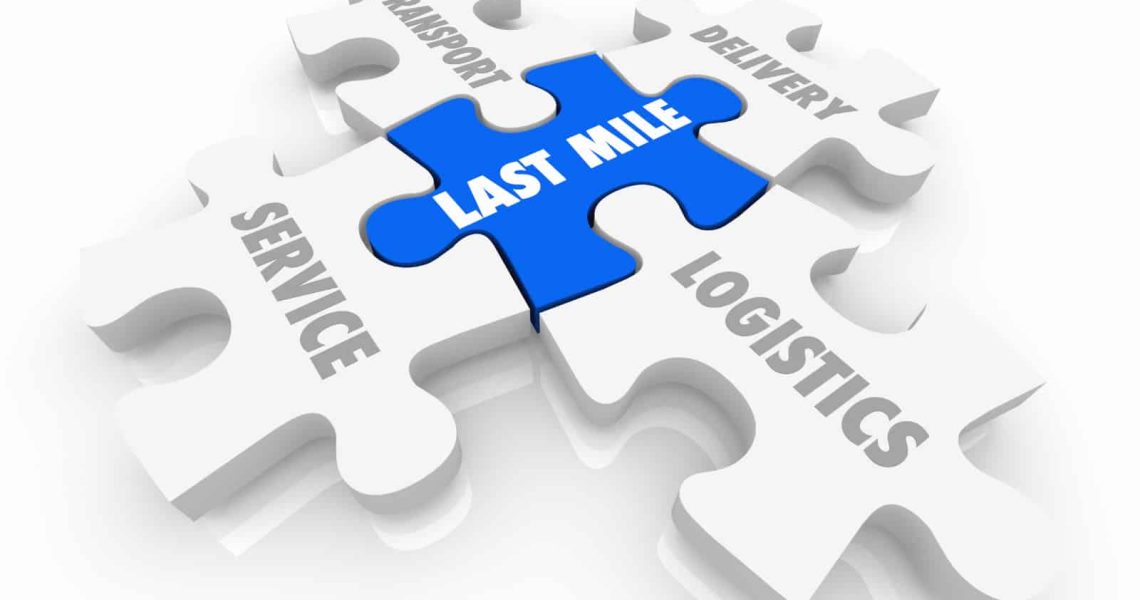Final mile delivery can be challenging for businesses without the right partner.
Many businesses are trying to introduce or refine technologies and tools to help expedite deliveries to today’s customers.
Still, no matter what experimental supply chain models are introduced, final mile deliveries are best left to those with experience.
What is Final Mile Delivery?
The last-mile delivery issue wasn’t a big issue in the past.
For some time, customers went to a store and purchased what they wanted. That’s no longer the case because of eCommerce.
The internet has created a new type of customer that wants to buy something online and wait for it to be delivered to their doorstep.
eCommerce is taking over the world, which makes sense. Customers have more choices online. The prices are unbeatable, and it’s so convenient.
Imagine not having to get dressed to shop or waste gas to go to the store. Everything is as easy as pressing a button.
All of this has created the final mile delivery issue. Customers don’t know much about this issue, but they experience it a lot.
The final mile delivery service is part of the delivery process.
When a customer places an order, many steps have to take place, from quickly pulling the item from a warehouse shelf to putting it on a truck to be shipped.
The last step that ensures packages get to customers is called the final mile delivery service. It’s a costly step, and it’s the one most businesses have trouble with.
It’s easy to ignore this issue, but if a business wants to be successful, it can’t, especially with the big players delivering faster than ever.
Folks are expecting the speediness of some marketplaces; anything less won’t lead to customer satisfaction. Businesses rely on customer satisfaction to gain repeat customers, so figuring this out is vital.
What is the Problem With Final Mile Delivery?
Digital shoppers love to track their packages. People like seeing companies and sellers get their packages ready and en route immediately.
The faster it’s en route, the quicker it’ll get to a person’s doorstep. Some sellers take a long time to send a package, but that’s another issue.
The last mile problem happens after this.
When the package is “out for delivery,” this is the last mile delivery step and the one virtually every business wants to improve.
When buyers see this, they want their package to arrive shortly after, but that doesn’t always happen.
A buyer could sit by the door, looking out for hours, maybe all day before the package is delivered.
It takes a long time to arrive because this step is not efficient. The truck or vehicle delivering the package has a lot of stops to make, which slows down delivery considerably.
The issue affects rural and urban areas in different ways.
In rural areas, delivery points are usually miles apart. This will slow down delivery.
On the other hand, urban areas deal with delays because the delivery service has to make many stops along the way. If that wasn’t enough, this service also has to deal with traffic in the cities.
As eCommerce continues to grow, more packages are out there being delivered, and that makes everything even slower. It’s not like businesses can fix that, especially because customers love this way of shopping.
People also expect free and fast shipping. That’s what the major players offer, and everyone is used to that.
Why is Last-Mile Delivery so Costly?
Last-mile delivery can cost up to 53 percent of the cost of shipping an item to a customer.
Some businesses in the past were able to avoid dealing with this cost by simply asking customers to deal with it. That worked for some time, but Amazon changed all that.
Customers are less willing to purchase anything online unless it comes with free delivery.
It might seem unfair to online businesses, but that’s the way things are, and they must adjust if they want to remain in the world of digital commerce.
The reason this aspect of shipping is costly becomes clear once you pay attention to the process. The final mile delivery service has to be paid.
The final delivery service should know the city it’s delivering to well, or there will be even more delays. If the last mile delivery happens to be in Greenwood, Ind., then look for a delivery service there.
Finding the right final mile delivery service can take time, but it has to be done.
The more efficient the company, the cheaper the final price will be. Inefficiency doesn’t just cause delays; it also uses more gas, which will cost the seller more money in the long run.
What Should Businesses do About This?
No business wants to deal with this. They want to find a solution, which is why many are investing in ways to complete each shipment.
Some are turning to crowdsourcing local services. These could include things like Uber or Postmates.
In essence, shippers rely on regular folks willing to make the delivery for them, no matter the time of day or day of the week.
These solutions are effective, but they aren’t incredibly reliable. The folks making these deliveries are independent contractors. They don’t necessarily have to finish the task.
On top of that, they can be expensive. Still, it’s useful if an online company wants to keep customers happy.
Automation is another potential solution that many online businesses are hungry for. It is wise to invest in these technologies.
If automation takes hold, that final mile delivery will be taken care of 
Automation will eliminate the need to worry about paying anyone to make the delivery, and deliveries could occur anytime. However, that is still in the future.
Customer expectations are driving these changes, and it’s exciting to see where all this might go.
For those businesses that need specialized last-mile delivery services, especially for items requiring qualified care, time-sensitive documents, and things of that nature, consider building a relationship with a logistics provider such as VēLOX Express.
A courier such as this supplies the knowledge, technology, and qualifications to remove any complication out of getting things into your recipient’s hands as fast as possible.

